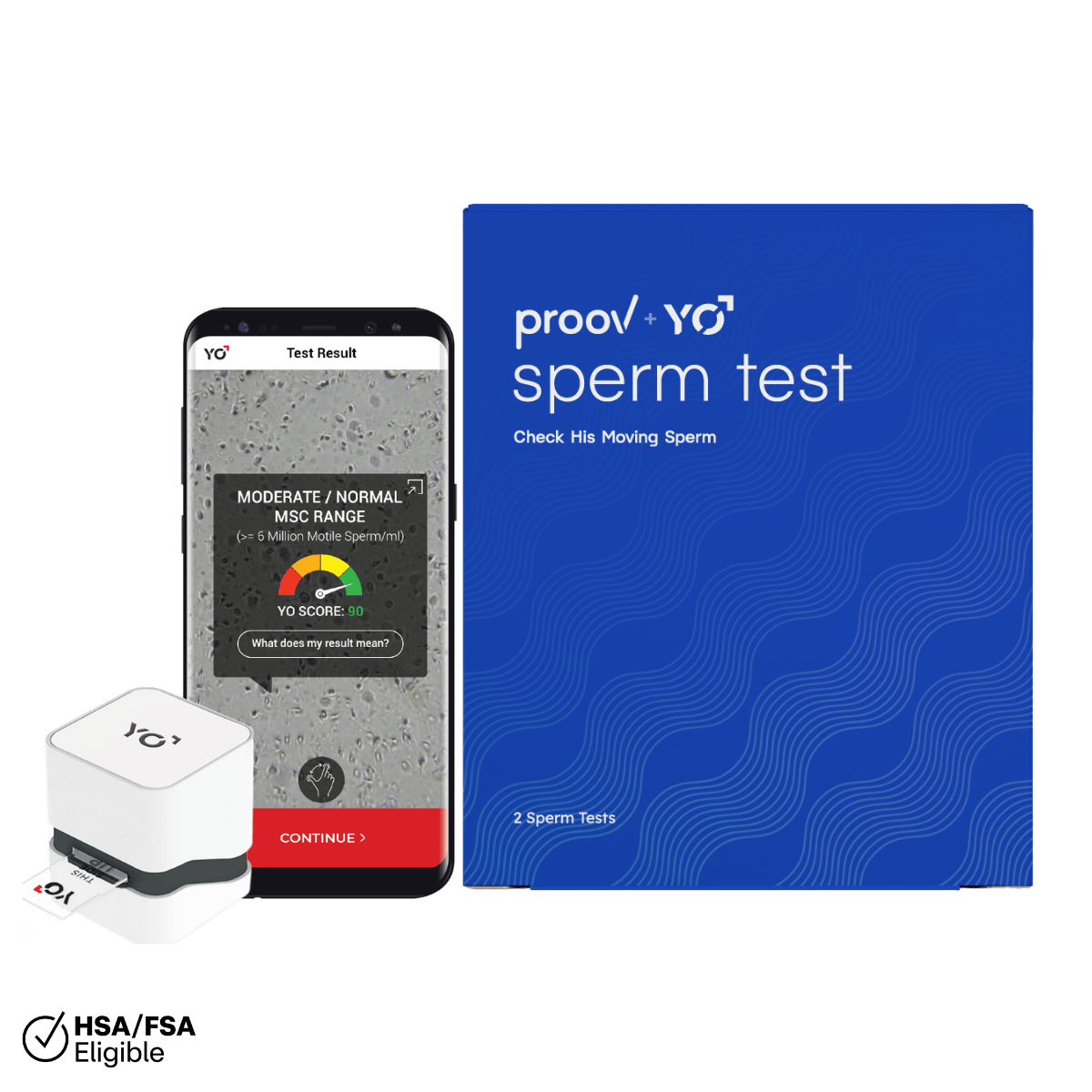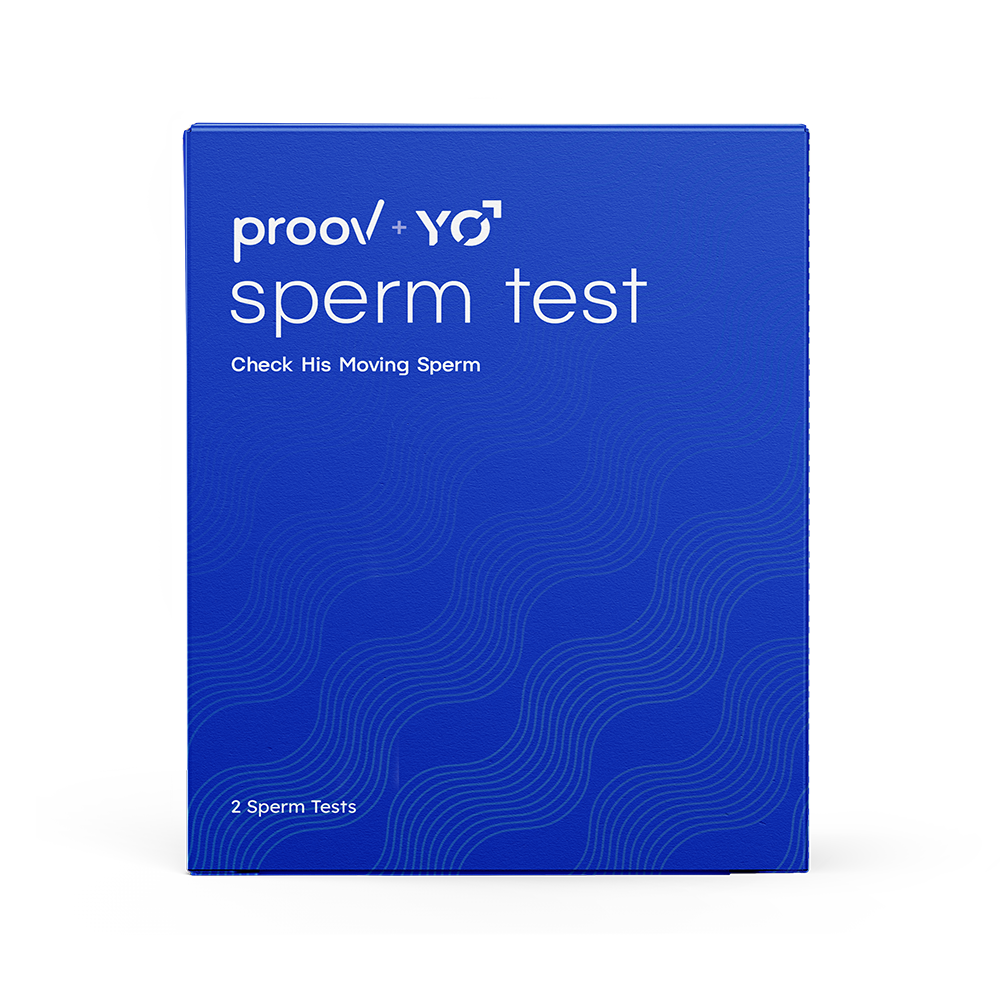Written by: Dr. Amy Beckley, PhD, Founder and Inventor of the Proov test – the first and only FDA-cleared test to confirm successful ovulation at home.
Cervical mucus monitoring is one of the techniques used to track your cycle and get pregnant. If you are trying to conceive, tracking the changes in your cervical mucus may help you identify your fertile window so that you can accurately time intercourse.
Changes in cervical mucus throughout your cycle and life can give insight into what’s going on inside your body. But what does cervical mucus look like after ovulation if you’re pregnant? Keep reading to find out!
What is cervical mucus?
Cervical mucus is a fluid produced by the glands around the cervix and plays an important role in reproduction. Its color and consistency change throughout the menstrual cycle under the influence of hormones, giving you valuable information about your fertility.
As hormone levels fluctuate in different stages of your cycle, so does the amount and thickness of your cervical fluid. Right after your period, you may experience dry or no cervical mucus
As you get closer to midway through your cycle — i.e. closer to when you should ovulate — then you may notice a gradual increase in the amount of mucus as your estrogen levels rise after your period.
As you get even closer to ovulation, you should start to observe fertile cervical mucus: more abundant, with a clear, stretchy, and slippery consistency that may remind you of egg-whites. That’s when you should have intercourse if you’re trying to get pregnant, as this type of discharge is a pretty reliable ovulation predictor.
Fertile ovulation discharge creates a protective environment for the sperm, so that it can easily swim to the egg.
To make sure you are in fact approaching ovulation, you may also test your LH with the help of urine ovulation test strips, like Proov Predict. Once you ovulate, your cervical mucus will change again.

What does cervical mucus look like after ovulation?
Immediately after ovulation, your estrogen levels drop, and you may have less discharge or even some completely dry days. A few days after ovulation into the second half of your cycle, more hormonal shifts occur and may change your cervical mucus consistency in preparation for pregnancy.
Watery discharge after ovulation, is a cervical mucus that is no longer clear and stretchy like a few days ago when your body was gearing up to release an egg. What you may see now is a cloudy and rather thick discharge.
If you do not get pregnant that cycle, hormone levels drop and your period begins again. Your cervical mucus cycle will begin again as well.
If you do get pregnant that cycle (congrats!), both estrogen and progesterone levels will rise to help nourish the progressing pregnancy. Along with this hormonal rise, an increase in blood volume that starts in the early stages of pregnancy may also boost the amount of discharge your body produces.
What does cervical mucus look like if I’m pregnant?
It’s important to note that cervical mucus consistency itself is not a reliable way to determine whether or not you’re pregnant. To confirm pregnancy, you really do need a reliable home pregnancy test or to get a test from your doctor.
While cervical mucus alone is not a reliable indicator of pregnancy, we can safely say that it is pretty rare to have dry cervical mucus after implantation since both estrogen and progesterone stay elevated during the luteal phase. However, the changes may be very subtle and can easily be overlooked.
You may experience a lot of milky or pale yellow vaginal discharge during early pregnancy. Once sperm and egg meet, the volume of discharge can increase as your vagina tries to get rid of bacteria that might be harmful to the new pregnancy.
Later on, this discharge will form the mucus plug which acts as a barrier between the vagina and the uterus to protect the growing fetus from infections during pregnancy.
How do I track cervical mucus?
First of all, you may want to keep a chart so that you can actually see the progression and write down all the changes. Second, especially if you're new to cervical mucus monitoring, you’ll want to start tracking immediately after your period so that you can see how the consistency changes over time.

Here are some steps you can take:
- Thoroughly wash and dry your hands.
- Find a comfortable position, either by putting one leg up on the toilet seat/bathtub or by sitting on the toilet.
- Carefully introduce your index finger inside your vagina, taking care to not scratch your cervix, especially if you have long nails.
- Remove your finger from your vagina and notice the amount and consistency of the mucus. Slowly press your index and your thumb together, then slowly move them apart. Is your discharge clear and stretchy? That means you are approaching ovulation.
- Write down the results so that by the end of the month you can have a nice progression and a general picture of how your cervical mucus changed throughout the cycle. This will allow you to observe patterns of potential fertility or infertility, and will provide valuable information for your doctor.
What if I don’t notice any changes in cervical mucus?
If at first you don’t notice any changes in cervical mucus or have a hard time telling the difference between consistencies, don’t worry! It can take a little bit of time to learn how your unique body works so don’t get discouraged.
However if you do not notice any cervical mucus at all, this could be a sign of a hormone imbalance (since changes in cycle hormones cause changes in cervical mucus consistency). Tracking your hormones across your full cycle with a kit like Proov Complete can help you understand if you are ovulating and track PdG (progesterone marker in urine) after ovulation, the key hormone to getting pregnant.
While monitoring changes in cervical mucus can help you monitor your cycle, they may not be the best indication of whether or not you’re pregnant. But we believe having a better understanding of your body and cycle is always great information to have!
Written by: Dr. Amy Beckley, PhD, Founder and Inventor of the Proov test — the first and only FDA-cleared test to confirm successful ovulation at home.
Medically reviewed by: Dr. Aimee Eyvazzadeh, MD, MPH
Written on 11/13/20
Updated on 5/25/25












